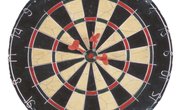
Trap and skeet shooting are two of the best ways to improve your shooting skills and harvest more upland game birds once the season opens. While commercial ranges are relatively common, the most dedicated shooter may prefer to design and build his own skeet and trap range. Such ranges require significant land and resources to build, but once constructed, they provide hours of shooting enjoyment.
Layout of the Field
Many commercial ranges create separate skeet and trap ranges, but you can construct a combination range if you wish. To do so, you must first set up the skeet range, which requires a land parcel at least 600 yards long and 300 yards wide. Lay out the semicircular skeet firing line so that the straight line is placed along the long side of the parcel, while the trap firing lines can overlay the skeet field. Place skeet shooting station No. 1 at the far left of the semicircle, and locate subsequent stations 8.13 meters away from each previous station, as measured along the circumference of the circle.
Trap and Skeet Houses
To create a combination skeet-trap range, you will need to construct three houses. Place one of the houses in the center of the field to launch targets for trap, but place the other two houses at the right and left sides of the field. The trap house launches clays away from the shooters, while the skeet houses launch targets perpendicularly to the field of play. The skeet house on the left – called the high house – should launch targets from a window whose center point is 10 feet high, while the low house – situated to the right of the field – launches clays from a window with a center point 3 feet 6 inches above the ground. The height of the trap house and the trajectory of the clays vary, depending upon the rule book in use.
Visibility and Vision
It is important that your range allow shooters to see clay targets well. You must install sufficient lighting if you intend to shoot after dark. The backdrop of the range should not contain buildings or other discrete objects; rather, try to ensure that the backdrop is an uninterrupted field or skyline, which will not distract shooters or make it hard to discern the clay target. Always orient the field so that it faces to the north or northeast, as this will alleviate most problems associated with sun glare.
Safety and Security
Safety should be your No. 1 goal when designing a skeet and trap range. Always ensure that shooters keep weapons unloaded and actions open until it is each individual participant's turn to shoot. Shooters should only utilize the trap stations or the skeet stations – never mix and match shooting games. Establish a cone-shaped “danger zone” – technically called the shot fall zone – that should remain off-limits while shooters are on the range. This 180-degree arc should extend 300 yards in front of the trap house. Additionally, you must secure the perimeter of the land to prevent trespassers from inadvertently entering the danger zone.



